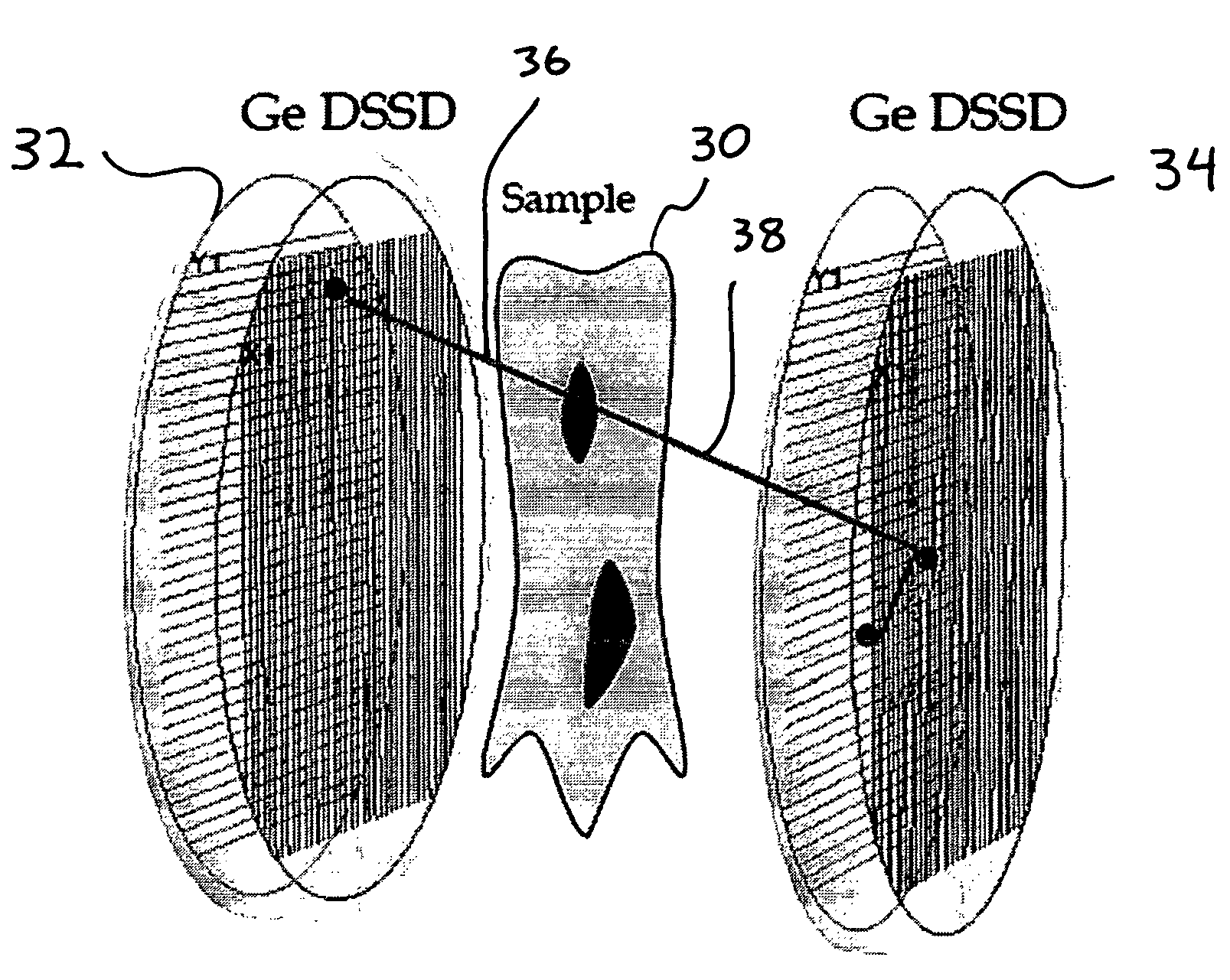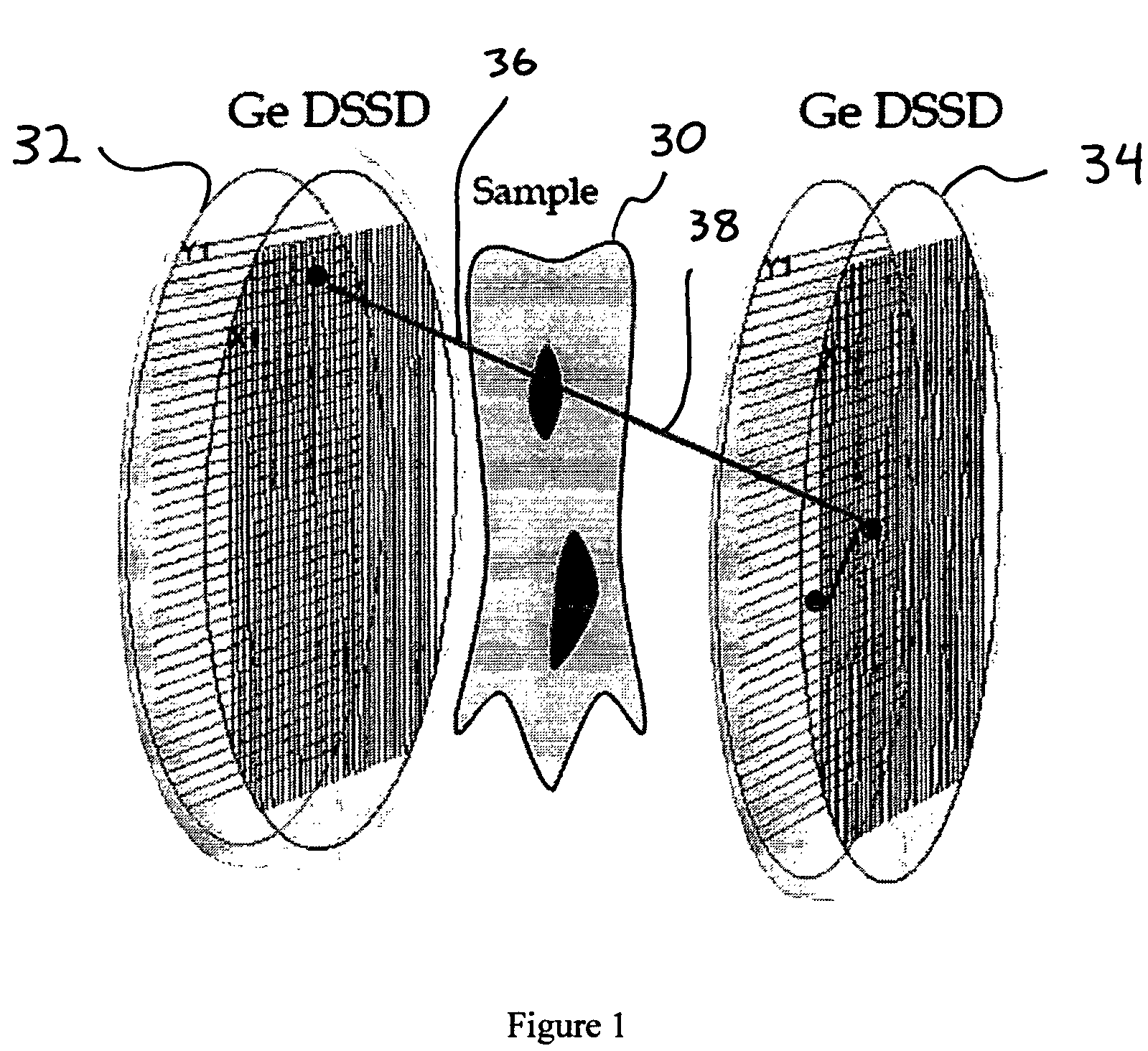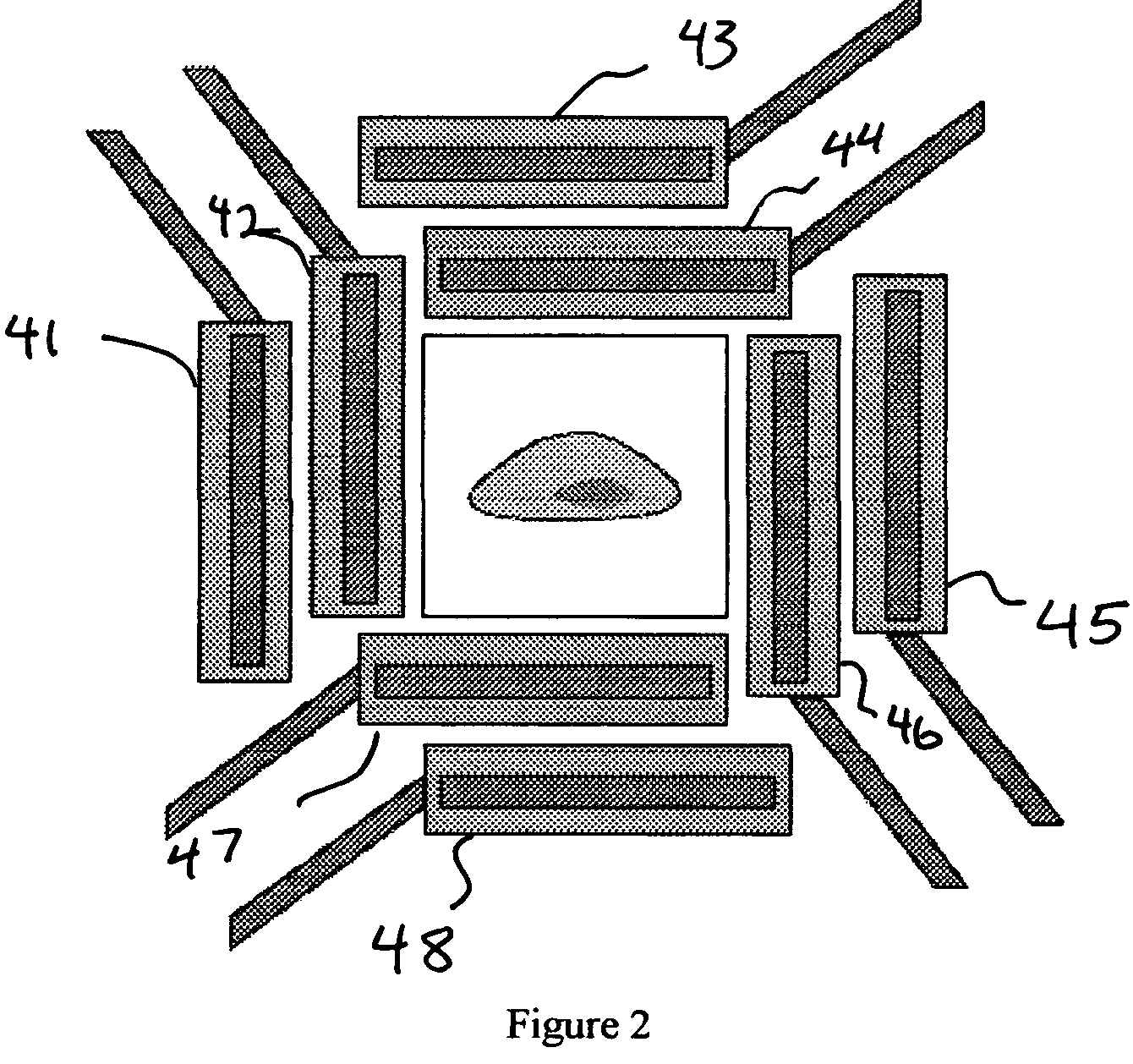Gamma-ray tracking method for pet systems
a technology of gamma ray and tracking method, which is applied in the field of gamma ray detection, can solve problems such as inability to correct multiple interactions
- Summary
- Abstract
- Description
- Claims
- Application Information
AI Technical Summary
Benefits of technology
Problems solved by technology
Method used
Image
Examples
Embodiment Construction
[0022]A PET detection system is a coincidence system that aims to detect two annihilation gamma-rays emitted at about 180 degrees from each other by a β+ radioactive tracer located inside a sample. The positions of the first interactions are used to reconstruct the direction of the two annihilation gamma-rays. This direction forms a line of projection, sometimes referred to as a line-of-response (LOR). By acquiring multiple such events, the distribution of the tracer inside the sample is reconstructed by analyzing the intersection of the corresponding projection lines.
[0023]The methods presented here make use of the data available in a high granularity, high position resolution detection system to determine more accurately the position where the photon interacted first in the detection system. This is achieved by finding the most likely scattering sequence of the gamma-ray photon in the detection system, when the gamma-ray interacts multiple times in the detector. This is made possi...
PUM
 Login to View More
Login to View More Abstract
Description
Claims
Application Information
 Login to View More
Login to View More - R&D
- Intellectual Property
- Life Sciences
- Materials
- Tech Scout
- Unparalleled Data Quality
- Higher Quality Content
- 60% Fewer Hallucinations
Browse by: Latest US Patents, China's latest patents, Technical Efficacy Thesaurus, Application Domain, Technology Topic, Popular Technical Reports.
© 2025 PatSnap. All rights reserved.Legal|Privacy policy|Modern Slavery Act Transparency Statement|Sitemap|About US| Contact US: help@patsnap.com



